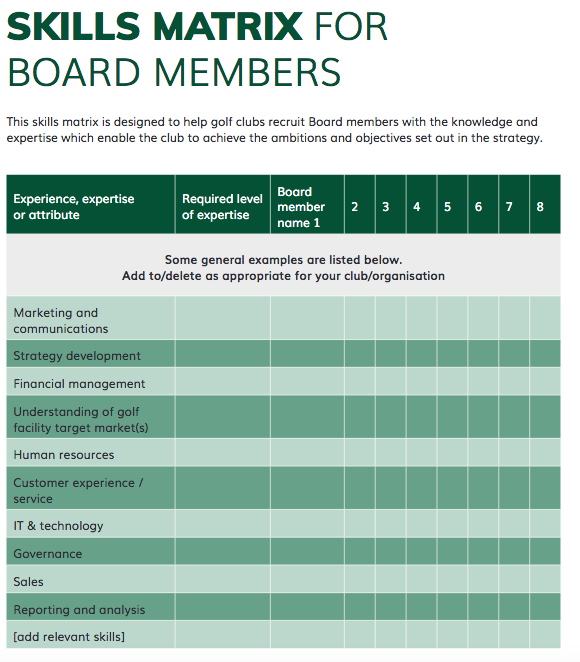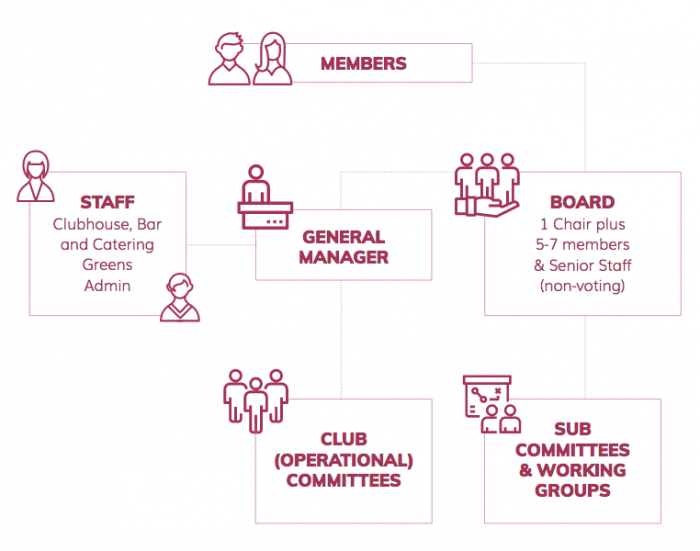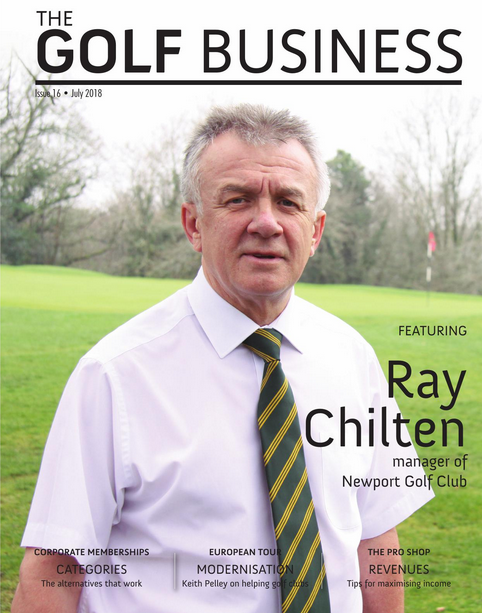The new governance guide for UK golf clubs
At the end of last year a new governance guide for UK golf clubs was issued as part of a drive to modernise and grow the game.
Created by key stakeholders including the home golf unions, The Professional Golfers’ Association (PGA) and The R&A, the guide is ‘a strong template which can either be adopted or adapted to meet needs of individual organisations,’ said a spokesman.
Here is a summary of the guide.

Why is good governance fundamental to golf clubs?
A golf club is run by an elected board which has the responsibility to make decisions that will benefit the members and ensure a sustainable future for the club. The board should interact and work productively with a range of different people including paid staff, fellow volunteers and club members.
Having good governance in place (processes, systems and practices) will help to ensure accountability of the board and transparency of its actions to the membership.
Golf clubs that focus on their governance practices are often ahead of the curve and in a strong position to face the ever-changing challenges that emerge, including shifts in membership preferences, changes to local government policies, statutory obligations and evolving communications platforms. Excellent governance can be defined as:
- Putting in place policies, procedures and processes to meet legal requirements.
- Taking responsibility for setting your own standards, driving your own improvement.
- Continually developing the culture of your organisation.
What are the benefits of good governance for my club?
- Well governed clubs will be sustainable for the future – financially and administratively.
- It establishes the club’s purpose, which will drive decision making.
- A business-like approach to delivering the club’s aims.
- It helps recruit future board members, as well as staff.
- Industry surveys have proved that a well-run club is key to membership satisfaction (second only to the golf course).
- Many funders, commercial sponsors and golfing partners require organisations to meet minimum governance standards and legal requirements to ensure their investment is protected and they are providing money to well-run organisations.
- It helps organisations to make the best use of people’s skills, and avoid being totally dependent on one person.
- It creates an organisation which is well regarded by its stakeholders.

An effective committee
Establishing or developing committees (board, sub-committees, operational or working groups) that are as effective as possible is of the utmost importance. It is the foundation that allows good work to happen.
An effective committee:
- Has an appointed chairperson.
- Empowers the chairperson to enforce agreed meeting rules created annually by the committee to increase effectiveness.
- Implements a mandatory induction programme and offers educational opportunities.
- Works from a well-documented strategic plan, with supporting financial information.
- Embraces its responsibility to achieve the goals established at the start of each year within an overall strategic plan.
- Documents and implements a clear set of core policies and procedures.
- Embraces a set of job or role descriptions that clearly establish accountability and authority.
- Is clear on the different responsibilities of paid staff and appointed volunteers.
- Schedules a minimum of four committee meetings a year, including one dedicated to the review of the strategic plan and goals of the organisation. (Meetings should be carried out in an environment and atmosphere that recognises the contribution of volunteer members.)
- Undertakes an annual evaluation of committee performance, involving external input.
- Manages a staggered rotation system with a minimum / maximum term of office.
- Embraces a diverse nominations committee to promote volunteer opportunities to the entire golfing market place and then identifies and attracts representatives, based on their skillset and experience.
It is important that the board and sub-committees evaluate their own performance, both as individuals and collectively. This can also identify changes that could help the board to achieve better results.
Committee evaluations are best where strengths are recognised and can be built upon; but also where weaknesses are identified and addressed.
There are no hard and fast rules about how committee evaluation should be carried out. However, there are several factors worth considering:
- Evaluations need to be a genuine exercise of exploring areas for improvement.
- Evaluation requires a positive attitude to change and improvement. It has no value if it is viewed as a ‘tick-box’ exercise where everyone ticks the ‘we are doing well’ box without exploring potential areas for improvement.
- Evaluations need to be specific for the organisation. Each organisation should evolve a process that is right for it. Evaluations should reflect the organisation’s current stage of development, future plans and its complexity.
- Evaluations need to allow for feedback from members and staff. It is important to recognise how the performance of the committees impact on the members and staff of the organisation. To do this the organisation needs to decide how to get feedback from the members and staff – either throughout the evaluation or towards the end of the process.

Case study: Heaton Moor Golf Club
Heaton Moor, near Stockport, was founded in 1892 and wanted to change its governance structure to be run in a more business-like way.
The general committee, chaired by the club captain, consisted of 15 people, all of whom were elected annually. This made decision making and forward planning difficult. The committee members were also individually exposed to any liabilities that might be incurred.
The club created a positioning document and a small steering group, representing various sections of the club, was formed to define the governance changes. A members’ forum was held, the club met other clubs that had reformed and the club surveyed members to see how much support change proposals had.
The proposals were supported by 85 per cent of members. The new committee structure consists of a five-man board plus the non-voting club secretary. Three sub-committees were set up and clear role and responsibility statements were published for all committee members.
Financial control and budget management has also improved, as has marketing activity and clubhouse revenue.
A club feedback survey gave the club management a Net Promoter Score (NPS) of +84, compared with the national average of +73.

Case study: St Ives (Hunts) GC
St Ives (Hunts) Golf Club relocated to a brand new 18-hole facility in Cambridgeshire in 2010 and, with relocation, came uncertainty: fluctuating membership numbers and, more critically, a general loss of strategic direction within the club.
The areas that required immediate direction were:
- Establishing a clear and accurate membership baseline and database for regular communications.
- Creating an effective marketing plan to attract new members and additional income streams, including green fees.
- Raising the club’s profile in the community, including establishing links with local businesses.
- Creating a strategic plan with clearly defined objectives to put the club on a business-based footing.
A thorough review of the membership database was conducted, providing an accurate record of all members by category and full understanding of this primary income stream. A strategic plan was developed from the bottom up, driven by members, coordinated by the general manager and based on a full and detailed analysis of the club. Delivery of the plan includes an annual review. The club underwent a full governance review and is planning to become incorporated, with a new management structure to reflect this change. A number of business initiatives were undertaken, such as facility redevelopment, new membership opportunities, online tee booking, engagement with local schools and charities, junior and Get into Golf coaching, developing the PGA professional service and training for staff.
Results: An overall increase in playing membership of nine per cent, junior membership increased by 143 per cent, an increased green fee yield of 20 per cent, a family fun day attracted 750 people and links have been created with several local businesses.

Case study: Newport GC
Due to the members feeling they weren’t being listened to and the club going through a period of ‘no decision making’, Newport tackled key governance issues including failure to make effective decisions, member communication and engagement, and unfair burdens on individual committee roles.
A task force was set up that visited 12 golf clubs across the UK, which recommended a new operating model for the Welsh club.
The committee structure was divided up into a management board and a captain’s committee. A new role of club manager was introduced, to be accountable for the day-to-day running of the club and framework for the future. All roles were recruited on a skills basis.
The club now has thriving membership numbers and improved engagement with members.
Case study: Forres Golf Club
The Scottish club was facing a number of challenges – its membership had halved to around 500, whose average age was above the Scottish average. Member engagement was poor, with many simply playing golf and leaving.
The club decided to survey members and visitors to gain feedback to guide its future direction.
This was followed by an open member forum asking for feedback, ideas and priorities. The feedback was significant, varied and clear.
It helped the club develop short and long-term plans, including 20 development initiatives to undertake over 18 months, action plans for each sub-committee and working groups, a list of willing volunteers to help undertake club development work, and a benchmarking process for measuring improvements in the club.
The club identified 23 new volunteers willing to join the club management committee or sub-committees, and a further 48 willing to join short-term working groups.
Members became significantly more engaged in the club generally – becoming more active in competition golf and social events, as well as taking an interest in the club more generally.
“The customer survey and forum helped in terms of membership retention and engagement. I can feel more people are engaged in the club, and more are playing in club competitions and opens,” said Murray Drummond, club captain.
To download a copy and read the entire guide, visit http://bit.ly/golfgovernance and click on the link at the bottom of the article















Let me tell You a sad story ! There are no comments yet, but You can be first one to comment this article.
Write a comment